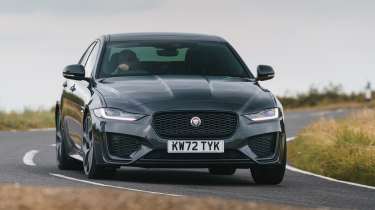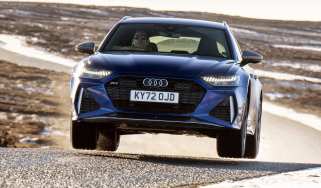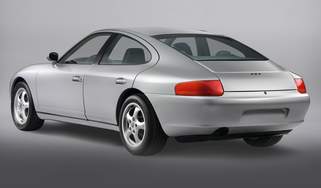Jaguar XE 300 Sport AWD 2023 review
It may be long in the tooth, but Jaguar’s compact exec is as accomplished as ever in 300 Sport trim
Like us, you might have forgotten that the Jaguar XE existed. Having launched in 2014, Jaguar’s compact executive saloon has been quietly ticking along as new generations of BMW 3-series, Mercedes C-class and Audi A4 have emerged, and while a comprehensive 2019 update brought it up to speed in some areas, it still feels its age in others. Even so, there’s a lot to be said for any car that nails the fundamentals as well as the XE does, as we found out from running the flagship 300 Sport AWD model as a long-termer on evo’s Fast Fleet.
European emissions regulations have tightened their noose around Jaguar’s mainstream saloons over the years, and while the XE was once available with a supercharged F-Type-derived V6 (and a V8 if you count the unhinged Project 8), the 300 Sport uses an 2-litre turbocharged four-cylinder Ingenium engine. Outputs of 296bhp and 295lb ft place it firmly in the realm of sports – rather than super – saloons, but the 300 Sport is priced accordingly at £43,500; about the same as a 280bhp Alfa Romeo Giulia Sprint. Reaching 62mph in 5.9sec and running to a top speed of 155mph, the XE’s performance is in a similar ballpark to the Alfa’s, too.
The engine is mated to an eight-speed automatic gearbox and cradled in an aluminium-intensive structure with bonded and riveted components for extra strength, with the 300 Sport weighing in at 1651kg. That might sound portly for a small saloon in isolation, but take into account the standard-fit four-wheel drive system – and the fact that a BMW M340i xDrive weighs 1800kg – and the XE makes a stronger case for itself.
More reviews
It makes an even better one from behind the wheel. The best Jaguars have always worked with, rather than against, the road surface, and the XE is no different, filtering out noise and coarseness while feeding just enough information back through the seat to engage the driver. Only the most broken, bucking tarmac overworks the chassis, the XE feeling lumpen and where an Alfa Giulia might skip through with a light touch, but the setup is otherwise beautifully judged.
You pour the XE down the road with swift, economical inputs, such is the accuracy and directness of the chassis and steering. And, refreshingly in 2023, it feels just the right size for a sports saloon, and that compact footprint gives you more scope to enjoy the car and skim between the hedgerows on a country road. Lean harder on those Pirelli’s and the Jag scribes your chosen line with sure-footed confidence, but it can feel slightly nose heavy through rapid direction changes; even with an all-aluminium four-cylinder up front.
Jaguar’s Ingenium engines have never been the most cultured or refined, and that bears true in the 300 Sport. Even in dynamic mode, there’s a softness to its delivery and a gruffness that undermines the polish elsewhere, but there is enough punch to energise the car through and out of a corner. With 90 per cent of torque driving the rear wheels in normal conditions, the XE takes on an attitude under hard throttle and only diverts torque to the front when necessary, neatly transitioning from slip to forward traction. Unless you truly overcommit, the Jag feels rewarding and clinically efficient when driven at pace.
Clinical is the word, though, for while the XE is as accomplished as an Alfa Giulia, it’s ultimately not as exuberant or entertaining. The Alfa has a distinctive blend of precision and compliance in its chassis that can make the XE feel one dimensional; it’s lighter and even more sensitive to tweaks of the throttle and steering mid corner, with a wider window of adjustability. The flip side is that the Jaguar feels a touch more rounded in other areas, with a more advanced cabin and tighter fit and finish.
The ergonomics are as good as anything this side of a 3-series, and while Jaguar’s latest Pivi Pro infotainment system sits slightly awkwardly within the XE’s older dashboard design, it operates with a slickness you’d expect of a modern saloon. The digital dial pack works a treat too with a crisp, logical layout, and the XE’s digital climate control display and updated steering wheel do a decent job of lifting what is essentially a last-generation cabin. It feels noticeably tighter inside than rivals like the Audi A4, though, which is worth bearing in mind if you regularly carry four adults around.
Price and rivals
There are more modern, more spacious, more advanced compact saloons out there, but very few feel as thoroughly well-engineered as the XE. With prices starting at £43,500, the 300 Sport AWD is aimed squarely at the recently facelifted Alfa Romeo Giulia, which is sold with a similarly-powerful 280bhp 2-litre petrol motor. On the road the Alfa is the more charismatic of the two and edges ahead of the Jag overall, but it’s not without weakness – namely its mushy brake-by-wire system and an engine that can feel breathless at the top end.
More mainstream rivals like the Audi A4 and Mercedes C-class simply can’t compete with the XE for driver involvement, which leaves the consummate saloon in this segment: the 3-series. It shades the Jag for quality, practicality and interior tech, but with the 330i being replaced by the 330e PHEV, there’s no equivalent model in the range to the XE 300 Sport. At £40,855, the 181bhp 320i M Sport offers far less performance for similar money, and the M340i is a complete mismatch with a starting price of £58,925. It may be old, but the XE remains highly competitive in the space that it occupies.
| Engine | In-line 4-cyl, 1997cc, turbocharged |
| Power | 296bhp @ 5500rpm |
| Torque | 295lb ft @ 1500rpm-4500rpm |
| Weight | 1651kg |
| 0-62mph | 5.9sec |
| Top speed | 155mph |
| Price | £43,500 |






